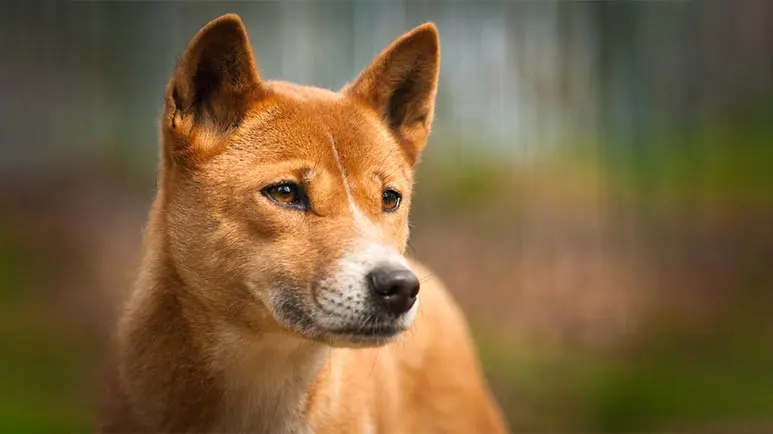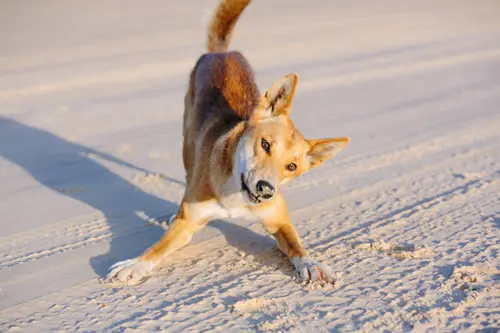Dingoes: A Glimpse Into the Domestication of Dogs?
Are Australian dingoes dogs - or wolves? Experts believe they may be in-between the two. But more importantly, these unique animals give us an opportunity to better understand how dogs evolved. Dingoes may resemble dogs, but in these four ways, they're very different.

STORY AT-A-GLANCE
- Dingoes look a lot like dogs, but they’re somewhere on the spectrum between wolves and domestic dogs
- Differences between dingoes and domestic dogs include starch digestion, bonds with humans, and the ability to survive in the Australian outback
- A 2010 study found that like dogs (and unlike wolves), dingoes can understand human gestures
- Dingoes are smart — much smarter than originally thought — which could be a result of their innate curiosity
Editor's Note: This article is a reprint. It was originally published May 31, 2021.
Most experts believe the dog was the first domesticated animal. Most also believe the wolf is the closest ancestor to the dog, but where does that leave the Australian dingo? As Pat Shipman, retired adjunct professor of anthropology at Penn State and author of a recently published journal article on dingoes1 told Penn State News:
"Indigenous Australians understood that there was something different about the dingoes and the colonial dogs. They really are, I think, different animals. They react differently to humans. A lot of genetic and behavioral work has been done with wolves, dogs and dingoes. Dingoes come out somewhere in between."2
Canis Lupus Dingo
Like wolves (Canis lupus) and domestic dogs (Canis lupus familiaris), dingoes (Canis lupus dingo) are canids. Unlike most animals, many canid species (including wolves, dogs, and dingoes) can interbreed and produce offspring that can also breed. This is one of the reasons it’s difficult for scientists to define the boundaries between canids more clearly.
The first domestic dogs landed on the Australian continent just a few hundred years ago, whereas dingoes arrived at least 4,000 years ago based on fossil evidence. Many of today’s dingoes in Australia have ancestors that were domestic dogs, but that obviously wasn’t always the case.
"Part of the reason I'm so fascinated with dingoes is that if you see a dingo through American eyes you say, 'that's a dog,’" said Shipman. "In evolutionary terms, dingoes give us a glimpse of what started the domestication process."

Dingoes Versus Doggos
Dingoes and their close cousin, the New Guinea singing dog, look like dogs, but aren’t. In terms of their genetics and behavior, dingoes are more like wolves, including their inability to digest starches and their relationships with humans.
- Difference #1: Starch digestion — On the topic of starch digestion, it’s important to note that research shows that because domestic dogs (carnivores) have been fed grain-based diets for decades, they’ve developed the ability to process some starch. This is called an evolutionary adaptation.
Over time, dogs have gained the ability to upregulate their production of amylase, the digestive enzyme necessary to process starch. However, this adaptation doesn't mean a starch-rich diet is a biologically appropriate source of nourishment.
Dingoes and wolves in the wild have continued to eat their ancestral diet and as a result, still have very few of the genes for starch digestion. - Difference #2: Human-animal bond — Even though indigenous Australians kept and raised dingo pups, in most cases once the youngsters reached maturity, they returned to the wild to breed and raise their offspring. The result is that unlike dogs, dingoes have maintained a limited ability to bond with humans.
 Dingo pups at play
Dingo pups at play - Difference #3: Selective breeding — Australians don’t manipulate dingo breeding, which is a hallmark of domestication.
- Difference #4: Survival in the Australian outback — Dingoes are also well-adapted to the environment of the Australian outback, whereas domestic dogs that are allowed to roam and become feral do not survive well in the outback.
Many people are convinced dingoes are just strange dogs, but aboriginal Australians disagree. Dingoes’ behaviors are somewhere between wolves and dogs, they have little ability to consume starchy foods, and they don’t tolerate captivity well, which is why Shipman has concluded that:
"A dingo is a wolf on its way to becoming a dog, that never got there."
Dingoes Are Smart and Understand Some Human Gestures
At one time at least, people thought of dingoes as “vermin,” according to Australian university researcher Bradley Smith.3 However, a paper Smith published in 2010 in Animal Cognition4 shows that dingoes are actually extremely smart. In fact, they’re able to respond to human signals — something wolves can’t do — and solve problems that are too frustrating for dogs.
Bradley’s study involved genetically pure dingoes living at the Dingo Sanctuary and Research Centre in Victoria. He wanted to learn if like dogs, and unlike wolves, dingoes respond to human gestures. Whereas dogs are very attuned to human body language, hand-raised wolves can learn to respond to only some signals.
For example, if food is hidden inside one of two containers, and a person briefly points to the correct container, a dog puppy will quickly find the food; a hand-raised wolf pup will not. In Bradley’s experiment, the dingoes also easily found the food, though they weren’t quite as good at following pointing gestures as dogs.
In another experiment that was part of a subsequent study, the researchers placed food inside a V-shaped see-through fence, requiring the animals to first move away from the food to successfully access it.
“Dogs are really bad at this,” Bradley told Australian Geographic. “They bark and look back at the experimenter, asking for help.”5
However, wolves have no problem passing this test, and as the researchers learned, neither do dingoes.
According to Australian Geographic, genetic work suggests dingoes evolved in East Asia and were probably domesticated to protect villages and as a source of fresh meat. Once in Australia, as mentioned earlier, dingoes weren’t selectively bred and lived primarily in the wild.
Bradley thinks the performance of dingoes in his experiments is probably the result of early domestication in Asia. However, other dingo experts believe their performance isn’t the result of human impact on their evolution, but rather an enhanced ability to communicate across the species barrier, no matter the species.
“They are very curious animals — in that way they’re more like cats,” Lyn Watson, founder and director of the Dingo Sanctuary and Research Centre told Australian Geographic. “And if they’re raised with other pets in a family, they create a team with that other species.”
Either way, it seems clear that dingoes are indeed very smart canids.
“We joke around here that you shouldn’t leave your cheque book lying around, because they’ll forge your signature,” Watson said.











